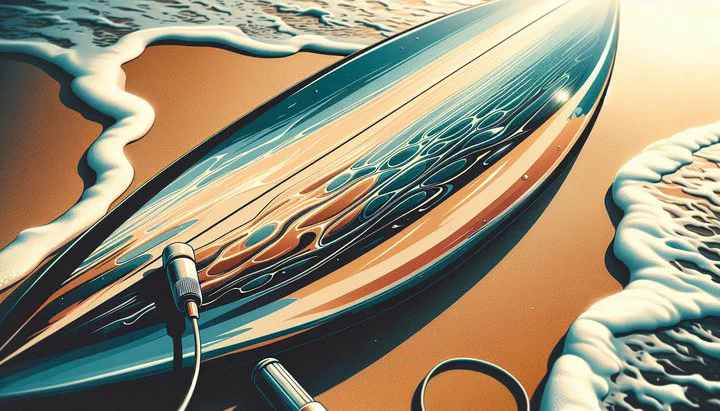Surfboard Repair Tips for Tip Damage

Understanding Tip Damage
Hey ocean lovers! If you’re anything like me, your surfboard is your trusty sidekick as you ride the waves. But sometimes, accidents happen, and your board might end up with some tip damage. So, what exactly is tip damage? It usually occurs when the tip of your surfboard hits something hard, like rocks or the ocean floor. You might notice this damage as visible cracks or dents at the tip of your board.
Tip damage is more than just a cosmetic issue. If left unchecked, those small cracks or dents can grow and cause bigger problems for your board. It can let water seep in, making your board heavier and harder to control. This can affect how well you surf and even shorten the life of your board. That’s why it’s important to repair tip damage as soon as you spot it.
When you notice tip damage, you might wonder if you can fix it yourself. You can use tip damage epoxy or similar materials to quickly fix minor damage at home. However, for more serious issues, especially if there are a few cracks around the left fin pictured, professional help might be needed. Fixing tip damage promptly helps maintain your board’s performance in the water, ensuring you can keep catching those waves without worry.
Using Epoxy and Ding Tape
So, you’ve spotted some tip damage on your surfboard, and you’re ready to fix it up. Don’t worry! With the right tools and a bit of patience, you can tackle those small cracks and dents yourself. For minor repairs, using tip damage epoxy or similar can work wonders, and ding tape for the few dents is also a great choice.
First, gather your materials. You’ll need epoxy, ding tape, sandpaper, and a clean cloth. Make sure you choose the right type of epoxy for your board. A clear, quick-drying epoxy usually works best. Start by cleaning the damaged area with fresh water and a cloth to remove any dirt or salt. This helps the epoxy stick better.
Once the area is clean, gently sand around the damage to create a rough surface. This helps the tip damage epoxy or similar adhere more effectively. Mix the epoxy according to the instructions, then apply it to the damaged tip. Make sure to cover all the cracks and dents. If you’re using ding tape for the few dents, apply it over the epoxy while it’s still wet for extra protection.
Now, let the epoxy cure. This might take a few hours, so be patient. Once it’s dry, use sandpaper to smooth the area down. Your board should look almost as good as new! I’ve repaired my board this way more times than I can count, and it always amazes me how well it holds up. Just remember, if there are a few cracks around the left fin pictured, it might be best to consider professional repairs for those more complex areas.
Repairing your board not only saves you money but also keeps you riding the waves longer. And who doesn’t love a good DIY project, right? Plus, with your board back in shape, you can hit the ocean with confidence, knowing you’ve handled that tip damage like a pro.
Considering Professional Repairs
Sometimes, despite your best efforts, the damage to your surfboard might be too severe for a DIY fix. This is especially true if there are major cracks around the fins or if the tip damage is extensive. While using tip damage epoxy or similar materials can be great for minor repairs, there are times when some sort of epoxy for the fins just won’t cut it.
If you notice there are a few cracks around the left fin pictured, it might be time to think about heading to a professional. Professionals have the tools and experience needed to ensure your board is repaired correctly. They can handle complex issues that might be beyond what a DIY repair can manage. This not only saves you time but can also extend the life of your surfboard.
Another handy tool is the pro tip protector thingo. You might be curious: would a pro tip protector thingo be enough for the tip damage? Let’s find out! These protectors can help prevent future damage by shielding the vulnerable tip of your board from impacts. However, they are more of a preventative measure rather than a repair solution. If your board is already damaged, it’s still best to get it repaired first.
In my adventures across the islands, I’ve had my fair share of surfboard mishaps. Consulting with professionals has often been the best decision for keeping my boards in top shape. They ensure that the repairs are durable and that the board performs well in the water. Plus, learning from the pros can teach you valuable tips for future upkeep.
Choosing to get professional repairs shows a commitment to maintaining your board’s quality and performance. Remember, your surfboard is not just a piece of equipment; it’s your partner in every wave you ride. So grab your tools, and let’s get your board ready for those epic ocean adventures!